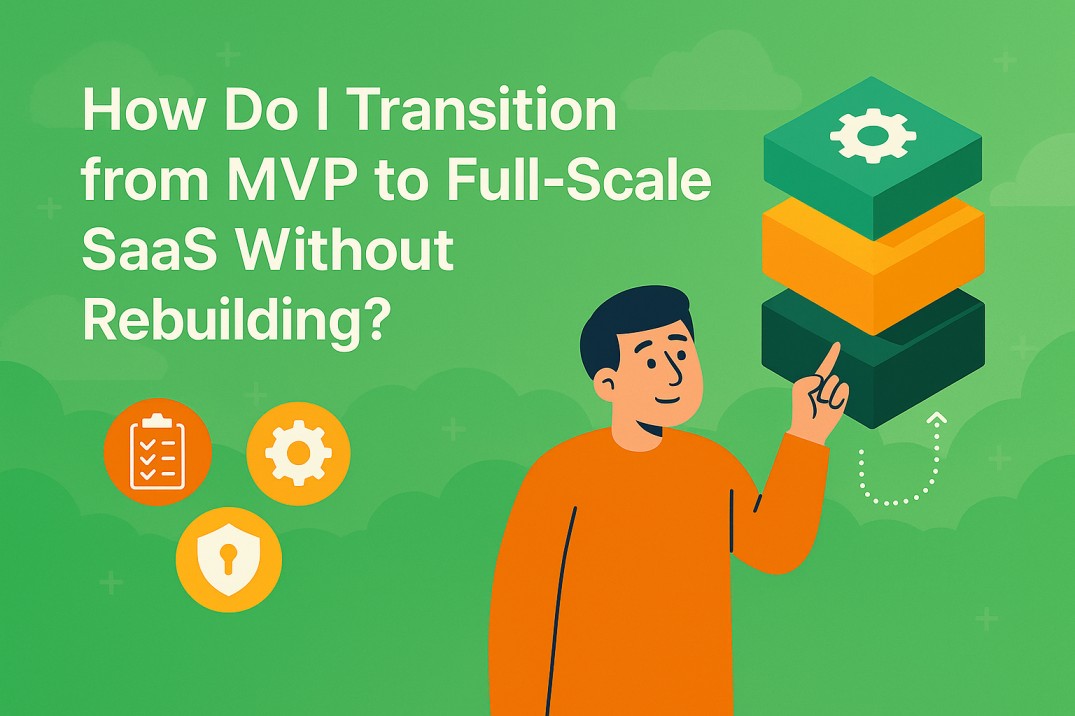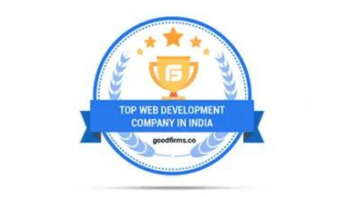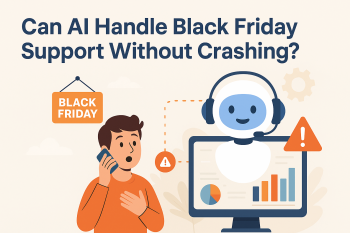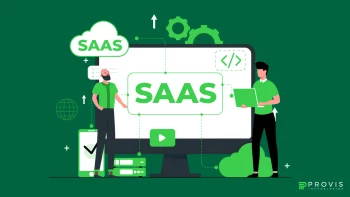You have built your MVP, gathered real feedback, and validated your core assumptions. Now it is time to make the most of that strong foundation and plan how to grow your SaaS product in a way that is practical, scalable, and sustainable. Most SaaS founders know that an MVP is not the final version but a valuable starting point for a product that can evolve and compete. The insights and traction you gain at this stage are what set you apart. For many teams, the next step is moving away from any low-code or quick-launch tools used to test the idea and building a robust tech stack that can scale with your goals.
Research shows that startups with a validated MVP reach product-market fit faster and secure funding more confidently than those still testing the waters. In this blog, we share a clear, step-by-step plan to help you use what you have learned from your MVP and build it into a full SaaS product with fewer risks and stronger results. If you would like expert support at any point, the team at Provis Technologies is here to help you plan, build, and grow with confidence.
Pre‑Transition Readiness: Is Your SaaS MVP Built to Scale?
Before investing significant resources in scaling, you must confirm that your foundation is genuinely solid and ready for expansion. This assessment prevents costly missteps and ensures your scaling efforts will yield meaningful returns.
Critical Usage Metrics to Evaluate:
- User retention rates that demonstrate sticky value
- Daily Active Users (DAU) and Monthly Active Users (MAU) showing consistent engagement
- Net Promoter Score (NPS) indicating user satisfaction
- Customer Lifetime Value (CLTV) that’s at least 3× your Customer Acquisition Cost (CAC)
Core Product‑Market Fit Validation: Your MVP must consistently solve a real, urgent problem for your target users. Look for evidence in user behavior, not just feedback—are people actively using your core features regularly?
Operational Readiness Assessment: Evaluate your team’s bandwidth, available budget, and tooling infrastructure. Scaling requires dedicated resources, and attempting it while resource-constrained often leads to technical debt and quality issues.
Technical Foundation Audit: Conduct a thorough code review to identify components that can be kept as-is, those requiring refactoring, and any that genuinely need rebuilding. Most issues are refactorable rather than requiring complete rewrites.
Also Read: How To Build A Minimal Viable Product (MVP) And Raise Funding In 2025?
Phase 1: Solidify Product‑Market Fit Before Scaling Your SaaS MVP
Scaling a SaaS product without a clear product–market fit is a high‑risk move—likely to undermine your growth.
Key actions:
- Implement continuous validation through user interviews, targeted surveys, and A/B testing.
- Aim for at least 30% retention at three months—typical for healthy SaaS products.
- Confirm that Customer Lifetime Value (CLTV) is at least three times Customer Acquisition Cost (CAC)—this indicates sustainable unit economics.
- CLTV measures the total gross profit from a customer over their relationship with your business.
- CAC represents the total marketing and sales cost needed to acquire a new customer.
- Establish feedback loops so new features align with real user needs.
Phase 2: Upgrade System Architecture & Infrastructure-No Rebuild Needed
Refine your MVP’s technology stack to support growth without throwing it away:
- Transition to modular architecture: Refactor the most-used components-like authentication and billing-into independent modules or microservices.
- Deploy DevOps tooling: Set up CI/CD pipelines, automated testing, Docker containers, and cloud auto-scaling (AWS, GCP, Azure).
- Optimize your database layer: Use indexing, query profiling, and caching. Consider sharding only when it’s backed by clear demand. Most performance problems come from inefficiencies, not obsolete systems.
- Implement robust monitoring: Track performance metrics, error rates, and user-facing responsiveness as usage expands.
Phase 3: Data‑Driven Feature Scaling to Grow Your SaaS
Ensure each new feature delivers real user value without bloating your product:
- Use proven prioritization frameworks
- RICE stands for Reach, Impact, Confidence, Effort. It scores each feature by estimating its expected user reach, potential impact, your confidence in the estimate, and the effort required
- MoSCoW stands for Must‑have, Should‑have, Could‑have, Won’t‑have (this time). It categorizes features according to priority in a given release
- Ship in small batches
Release 2–3 data-validated features per sprint. This maintains focus and agility without overwhelming users or the codebase. - Protect rollout with feature flags
Use flags to gradually release features, support A/B testing, and rollback instantly if issues arise. This supports safe continuous delivery - Measure impact precisely
Monitor feature adoption, retention, and revenue uplift. Tie each new release back to measurable ROI-only scale what moves the needle
Phase 4: Scale Security, Support & Compliance for Enterprise‑Grade SaaS
Prepare your SaaS to win enterprise clients and maintain trust as you grow:
- Fortify security posture: Enforce encryption for data at rest and in transit, implement role-based access control (RBAC), multi-factor authentication (MFA), and secure API endpoints.
- Plan for compliance: Begin documentation and process work for GDPR, HIPAA, and SOC2-certification may take months as you scale.
- Build strong support systems: Provide self-service documentation, smart bots, and ticketing systems. Transition to tiered support structures as the user base grows.
Hire for depth: Add domain experts-UX/UI designers, QA engineers, DevOps specialists, and dedicated support pros-to elevate product quality and user satisfaction.
Phase 5: Launch a Scalable Go‑to‑Market & Customer Enablement Strategy
Build engines that scale your reach and effectiveness with minimal manual effort:
- Diversify marketing channels: Invest in SEO-rich content, referrals, joint offerings, or integration partnerships.
- Establish trust signals: Share customer testimonials, ROI case studies, and thought leadership pieces to engage enterprise prospects.
- Streamline onboarding experience: Use in-app walkthroughs, tutorial sequences, and webinars to reduce drop-off-onboarding enhancements can improve retention by ~25%
- Close the feedback loop: Feed support ticket insights back into product planning, ensuring continued alignment with user needs.
Common Mistakes SaaS Founders Make When Scaling MVPs
Scaling a SaaS MVP requires focus and discipline. Unfortunately, many founders trip up at this stage. Here are the top pitfalls to avoid:
1. Feature Bloat
- What it is: Adding features just because they seem nice.
- Why it hurts: Overcomplicates your product, slows development, dilutes user value.
- How to avoid it: Use data-driven frameworks like RICE (Reach, Impact, Confidence, Effort) or MoSCoW (Must‑Have, Should‑Have, Could‑Have, Won’t‑Have). Only build what moves retention or revenue.
2. Ignoring Technical Debt
- What it is: Letting the code and infrastructure deteriorate while chasing features.
- Why it hurts: Leads to slowdowns, bugs, and more expensive fixes later.
- How to avoid it: Reserve time each sprint for refactoring, optimize database queries, and enforce clean code practices.
3. Premature Rebuilds
- What it is: Scrapping your MVP and starting over.
- Why it hurts: You lose validated insights, working scripts, and reliable components-only to reintroduce bugs later.
- How to avoid it: Analyze dependencies, refactor incrementally, and rebuild only if absolutely necessary.
4. Churn Blindness
- What it is: Focusing on new users without preserving existing ones.
- Why it hurts: High churn cancels out acquisition efforts, stalling growth and damaging unit economics.
- How to avoid it: Monitor cohort retention, improve onboarding, add engagement triggers-focus on keeping users long-term.
Read More: 8 Step Tech Stack Selection Process
Conclusion & Your 5‑Step SaaS Scale Audit
Scaling your SaaS MVP should never feel like starting over. Your MVP holds valuable user insights, validated features, and a proven foundation that deserves to grow – not be thrown away.
Use this simple five-step checklist as your roadmap to evolve with confidence. It will help you stay focused on what matters most: keeping your product lean, your systems healthy, and your users happy as you scale.
Your 5-Step SaaS Scale Checklist:
✅ Confirm your retention, DAU/MAU, and CLTV to CAC ratios
✅ Refactor modules, adopt CI/CD, and improve architecture
✅ Prioritize features with frameworks like RICE or MoSCoW
✅ Scale security, compliance, and support for new users
✅ Strengthen go-to-market and onboarding to keep users engaged
Your MVP is not a rough draft to discard. It is your launchpad for sustainable growth when you invest in systematic improvements and work with the right partners.
If you want to scale without the pain of starting from zero, Provis Technologies is ready to guide you every step of the way – from technical audits to a tailored roadmap that preserves what you have built.
👉 [Book Your Free SaaS Scaling Consultation]
FAQ: MVP-to‑Full‑Scale SaaS Transition Questions Answered
Only when your architecture is fundamentally unmanageable-like a tightly coupled monolithic database with no modular structure. In most cases, targeted refactoring and CI/CD implementation will suffice. If you’re unsure, Provis Technologies can help assess and guide your architecture strategy.
Target at least 40% user retention at 90 days, CLTV at least 3× your CAC, and stable DAU/MAU engagement patterns that demonstrate consistent user value.
Prioritize adding DevOps/QA capabilities, UX/product expertise, and Customer Success leadership early. These roles amplify both development speed and quality outcomes.
Most no-code platforms have scaling limitations that require migration to custom code once significant traction builds. Plan this transition early to avoid platform constraints.
Feature flags enable safe feature rollouts to subset user groups and instant rollback capabilities-critical for maintaining system stability while shipping new functionality rapidly.
Written By
Author's Picks
- Top Web Developer in India by Clutch
- 13/02/2020
- Best Maintenance Tips for WordPress Online Stores
- 08/12/2023
- Data Privacy Laws and Their Impact on Web Development
- 18/09/2024
Categories
- AI for Startups
- AI in Web Development
- AI Integration
- AI Platforms
- AI Prompt
- AI Tools
- AI Trading Software
- Android App
- Android vs iOS Development
- Angular
- API
- API Development
- App
- app development
- App Idea
- App User Feedback
- Application
- Artificial Intelligence
- Audit Services
- Automotive Industry
- Awards and Recognition
- Business Consulting
- Business Website
- Chatbots
- CRM
- CRM for Financial Advisors
- Custom CRM
- Custom SaaS
- Custom Website
- Customer Service
- dashboard design
- Developing a Mobile App
- Digital Business
- E-commerce
- EMR Integration
- Finance
- Financial Advisors
- Financial Advisors
- GIT
- Health Insurance
- iOS App
- iOS App Development
- IoT Mobile App Development
- IoT Platforms
- IT Audit Services
- IT Consulting
- IT Strategies
- Java Development
- Laravel
- Lean Canvas
- Learning Management System
- Logistics Apps
- Mobile App Development
- MVP
- Native App
- News Aggregator Site
- OTT
- Outsourcing IT
- Payment Gateway
- predictive analysis
- Product Launch Strategy
- Progressive Web App (PWA)
- Prototype
- Recommender Systems
- Ruby
- SaaS
- SaaS Application
- SaaS Business
- SaaS Company
- SaaS Development
- SaaS Product
- SaaS Project
- Sales Funnel
- SEO
- Shopping Cart
- Software Development
- SSL and TLS
- Startup Checklist
- Technology
- Tetradic Color Scheme
- UI/UX Design Company
- Unit Testing
- User Flow
- User Testing
- Web Development
- Web Performance Optimization
- website Maintenance Services
- Website Migration Service
- Website Speed Optimization
- WooCommerce
- WordPress





